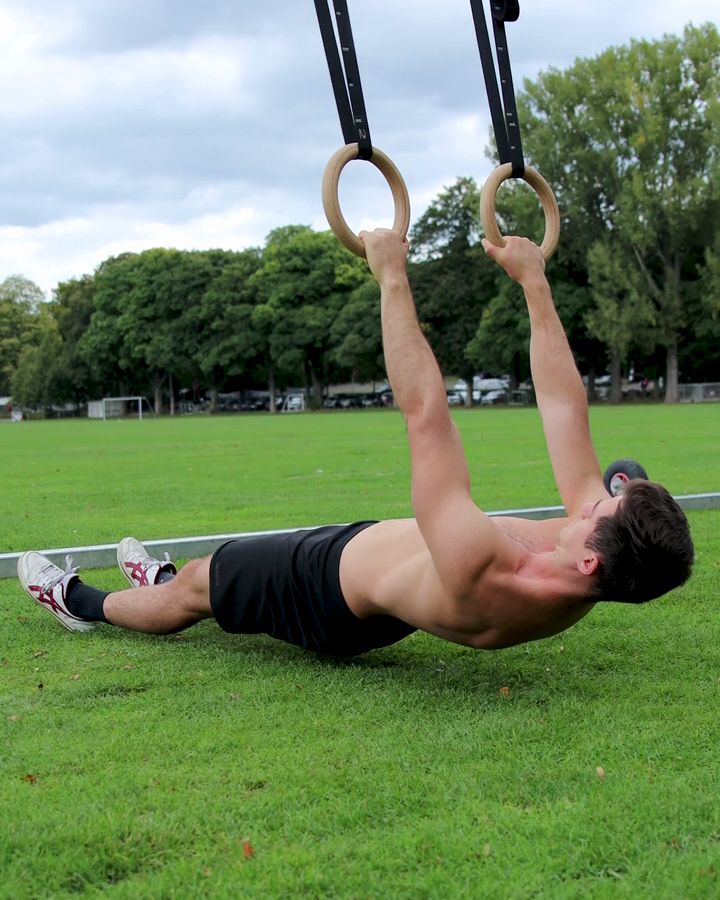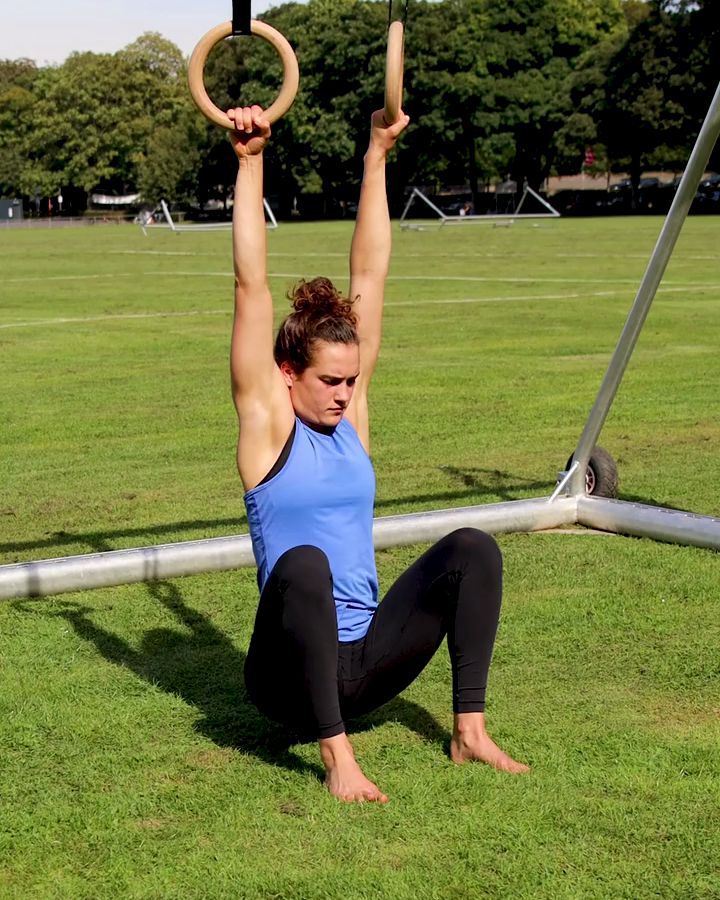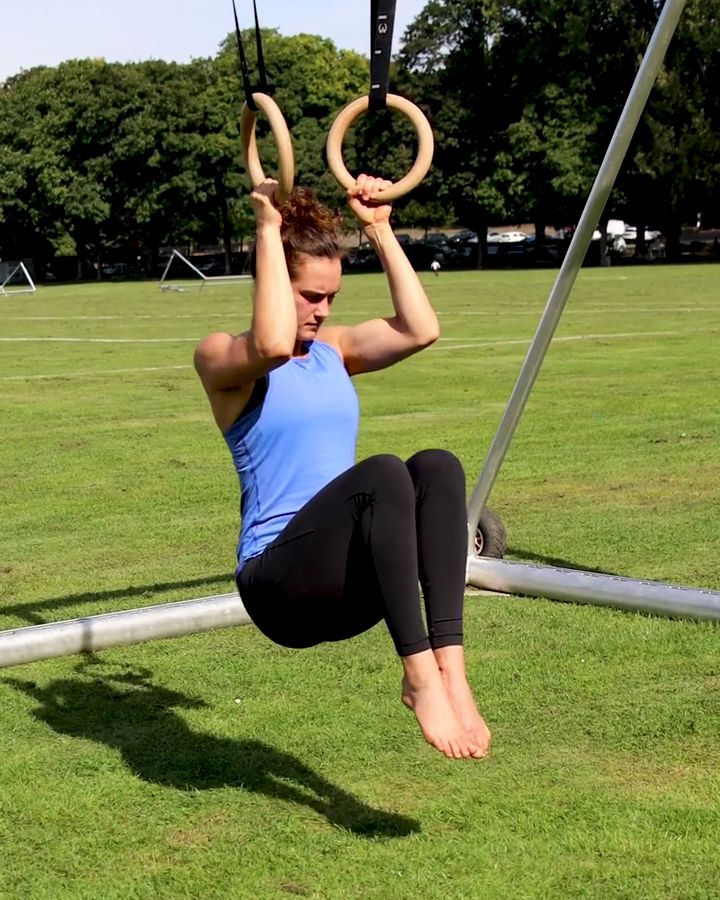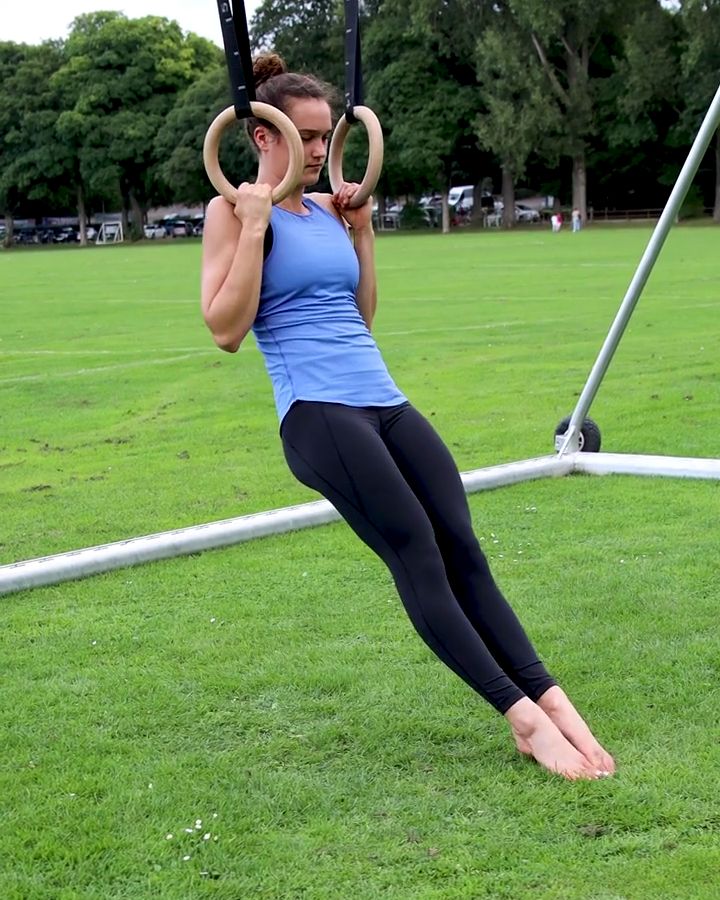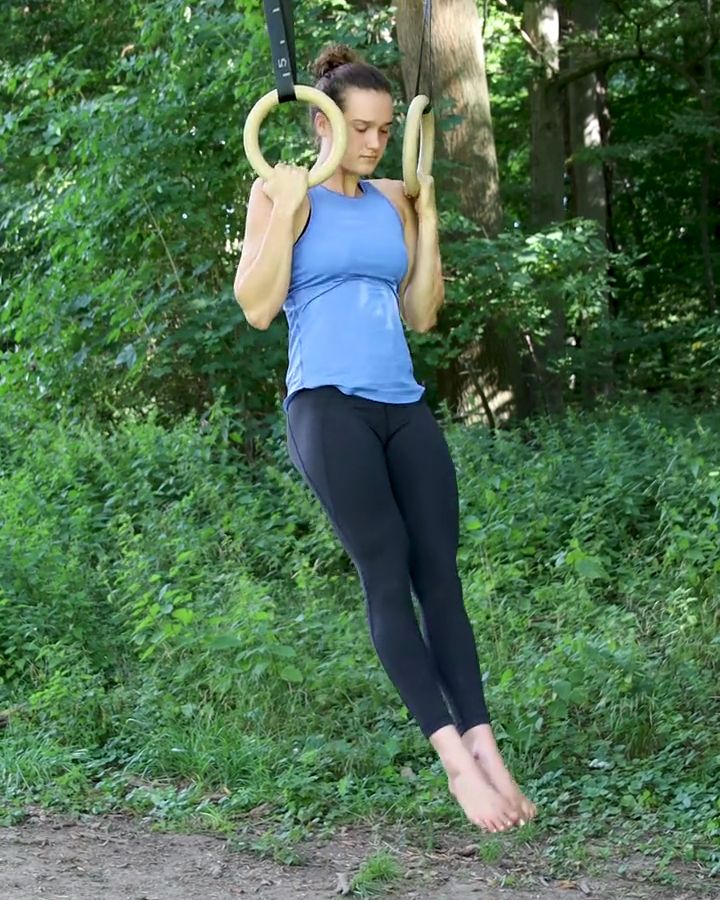How Women Can Master Pull-Ups – 6 Effective Exercises
What’s stopping you from achieving your first pull-up?
Often, it’s not a lack of strength but the right technique and targeted training.
In this article, we’ll show you how, as a woman, you can build strength step by step and overcome common challenges along the way.
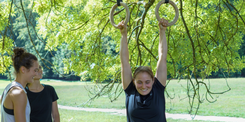
Mastering Pull-Ups: Achievable for Everyone with Determination and a System!
A pull-up is not just an impressive fitness goal but also one of the most effective exercises in strength training. The good news: with a structured training plan, a focus on proper technique, and the necessary determination, anyone can achieve this goal. Women, in particular, benefit from a systematic approach as they often face different muscular challenges. In this article, we’ll guide you step by step to build strength and master your first pull-up through targeted training.
Pull-Ups for Women and Men: A Top Fitness Goal to Achieve
Pull-ups are one of the ultimate fitness goals for many athletes. However, especially for beginners, and particularly women, this goal can seem out of reach. The truth is, pull-ups can be learned by anyone with the right technique and a smart progression plan. We’ll show you how to perform the movement correctly, activate your back muscles effectively, and overcome common hurdles like a lack of strength or poor muscle coordination.
Pull-Ups as a Symbol of Strength: Why They’re for Everyone
A pull-up is typically seen as a symbol of strength and body control. The ability to lift your own body weight against gravity demonstrates exceptional power and coordination. Unfortunately, the misconception that pull-ups are only for men persists. It’s often claimed that women’s anatomy isn’t suited for this exercise – but that’s simply untrue.
With a structured training program featuring exercises like Scapular Pull-ups, Chin-Up Hold, and Lat Activation Drills, any woman can strengthen her back muscles and conquer her first pull-up. The results? Greater strength, improved posture, and boosted self-confidence.
The Benefits of Pull-Ups in Strength Training
Why should you learn pull-ups? Because they not only increase your strength but also make your entire training more efficient! Pull-ups are classified as compound exercises since they engage multiple joints, including the shoulders and elbows. They activate major muscle groups like the latissimus dorsi, trapezius, and biceps, making them one of the most effective upper-body exercises.
Pull-ups not only build upper-body strength but also improve muscle coordination. Additionally, they are pull exercises, providing the perfect balance to push exercises like push-ups or bench presses. If you want to train effectively and achieve maximum results, pull-ups should be a staple in your workout routine—no matter your fitness level.
Women and Pull-Ups: Why It’s Often Challenging and How to Succeed
Women often face unique challenges when learning pull-ups. While the exercise primarily relies on large muscle groups like the latissimus dorsi and the trapezius, many women unconsciously shift the workload to the biceps and forearms, which can make the movement feel more difficult than it actually is.
Another factor is the lack of back muscle activation in daily life. Activities like prolonged sitting or driving rarely engage these muscles, causing the body to "forget" how to use them efficiently. However, a strong back is crucial not only for pull-ups, but also for maintaining a healthy and upright posture. To learn more about why a strong back matters for better posture, check out our article: “How to Improve Your Posture”.
With targeted exercises like scapular rows or assisted pull-ups, you can improve muscle activation and build a solid foundation for your first pull-up.
The stigma that women lack back strength unfortunately still persists. However, with negative pull-ups and a progressive training approach, women can quickly build the strength they need and reap the many benefits pull-ups bring to their overall fitness.
Mastering Pull-Ups: Activating the Right Muscles for Effective Training
Why Back Muscles Are Key to Pull-Up Success
The lack of activation in the typically strong back muscles often leads athletes—especially women—trying to learn pull-ups to rely heavily on pulling with their arms. As a result, the biceps end up doing most of the work. While the biceps are smaller and easier to engage than the back muscles, they’re simply not strong enough to lift your entire body weight. The outcome? A failed pull-up, despite using all your strength.
This can be discouraging and lead to self-doubt. The good news? With targeted training, you can tap into hidden strength reserves by learning to engage your back muscles during the movement. Once you’ve activated your back muscles properly, you’ll unlock more power and control. In the next sections, you’ll discover which exercises can help you improve and reach your pull-up goals.
The Correct Pull-Up Technique: From Passive to Active Hang
A proper pull-up—one that earns the respect of other athletes—starts in a passive hang position. The pull-up begins with an essential movement that many overlook: retracting the shoulder blades by pulling them down and back. This transitions the body from a passive to an active hang, which allows the latissimus dorsi (the largest back muscle) to engage effectively.
Mastering this initial movement is the first step toward a clean pull-up. The goal is to train your ability to activate your back muscles in the active hang position. This forms the foundation for performing a full pull-up. Check out the videos below to see the difference between passive and active hang positions, and explore beginner exercises to help you on your pull-up journey.
Scapular Pull-Ups: The Foundation for a Perfect Pull-Up
Scapular pull-ups are one of the most effective exercises for training back muscle engagement—an essential step toward mastering your first pull-up. To perform this exercise, hang from a bar or rings and actively pull your shoulder blades down without bending your arms. Keep your body straight and maintain a slight recline position throughout the movement.
Necessary equipment
Scapular Pull-Ups – How to Perform Them Correctly:
- Start in a hanging position on the rings with a shoulder-width grip
- Engage your core muscles to keep your body stable
- Slowly pull your shoulder blades back and down without bending your arms
- Hold the end position for a moment, feeling the tension in your shoulder blades
- Ensure the rings remain stable and quiet throughout the movement
- Lower your shoulder blades back down to the passive hang in a controlled manner
- Repeat the movement at a steady pace with calm breathing
Scapular Rows: Activating Your Back Muscles Without Full Body Weight
Scapular rows are an excellent alternative for activating your back muscles without requiring them to lift your full body weight. During this exercise, your feet remain on the ground, allowing your legs to provide support. This makes scapular rows ideal for beginners working on their scapular activation, as well as for advanced athletes who can use them as a warm-up or active recovery exercise.
Necessary equipment
Scapular Rows – Step by Step:
- Start in a deep rowing position
- Take the shoulder blades back down
- Go back to the starting position
- Arms remain stretched throughout
- Join small steps backwards to reduce the intensity
Supported Pull-Ups: Training Your Back Muscles Without Full Body Weight
Supported pull-ups with gymnastic rings are among the most effective exercises for learning how to do a pull-up. This exercise allows you to practice the full range of motion of a standard pull-up while improving the coordination of all the muscles involved. Since your feet remain on the ground throughout the movement, you can easily adjust the intensity: the less you rely on your legs for assistance, the more challenging the exercise becomes.
Necessary equipment
Supported Pull-Ups – How to Perform Them Correctly:
- Start with your feet on the ground and your arms fully extended
- Retract your shoulder blades downwards and backwards
- Pull the rings towards your chest
- Support yourself with your legs as much as necessary
- Lower yourself slowly and controlled back to the starting position
Negative Pull-Ups: The Key to Mastering Your First Full Pull-Up
Negative pull-ups are a foundational exercise for achieving your first pull-up. This exercise emphasizes the eccentric phase of the movement, where you lower yourself in a controlled manner from the top position of the pull-up into a full hang. This phase allows you to target key muscles—particularly the latissimus dorsi, biceps, and trapezius—at a higher intensity, helping you build the strength needed for a complete pull-up.
Necessary equipment
Negative Pull-Ups – Key Points to Keep in Mind
- Start in a hang with your feet on the ground
- Retract your shoulder blades downwards and backwards
- Pull the rings up to your chest
- Use your legs as much as necessary to assist you on the way up
- Lift your legs in the top position
- Pause briefly before you start to lower yourself
- Lower yourself slowly and controlled back to the starting position
- Lower yourself until your arms are fully extended
- Maintain control over the negative phase, which is the lowering part
- Ensure that your movements are smooth and controlled
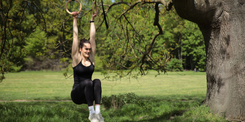
Effective Strength Building with Eccentric Training
Learn how to build strength and muscle control with the eccentric training method. By focusing on slow, controlled downward movements, you can maximize your progress and reach your goals faster—whether it’s mastering pull-ups or improving other exercises.
Seated Pull-Ups on Gymnastic Rings: The Next Step Towards Your First Full Pull-Up
Seated pull-ups on gymnastic rings are an excellent transitional exercise if you haven’t yet built the strength for a full pull-up using negative pull-ups. This exercise is similar to assisted pull-ups, but with one key difference: your legs remain straight throughout the movement. This reduces the assistance from your legs, increasing the intensity on your back muscles and biceps.
Necessary equipment
How to Perform Seated Pull-Ups Correctly
- Start seated between the rings with an upright torso
- Grip the rings with fully extended arms
- Pull the rings up to your shoulders
- Extend your hips as you pull yourself upwards
- Keep your feet firmly on the ground throughout the entire exercise
- Use the contact with the ground to reduce the intensity and maintain control of the movement
The Full Pull-Up: Technique and Strength Building for Effective Training
The full pull-up is the ultimate goal of your training—a perfect combination of strength, technique, and coordination. To perform it correctly, focus on executing each phase with precision: start from a dead hang, pull yourself up in a controlled manner until the rings or bar touch your shoulders, and then lower yourself just as slowly back to the starting position.
Mastering the full pull-up requires consistent practice and progression, but with dedication and the right approach, you’ll unlock its many benefits for strength and fitness.
Necessary equipment
The Full Pull-Up: Technique and Strength Building for Effective Training
- Start in a dead hang position with arms fully extended
- Actively retract and depress your shoulder blades
- Pull the rings up to shoulder height or as high as you can
- Lower your body back down in a slow and controlled manner
- Fully relax and hang between each repetition to completely release any tension
How Long Will It Take to Achieve Your First Pull-Up? Tips for Faster Progress
The time it takes to master your first pull-up depends on several factors, such as your current strength level, body weight, and training consistency. While there’s no one-size-fits-all answer, a well-structured training plan focused on progressive overload can help you see results more quickly.
Following the principle of supercompensation, aim to train 2–3 times per week, incorporating essential pull-up exercises like negative pull-ups or assisted pull-ups. Make sure to give your body enough recovery time between sessions to come back stronger and avoid overtraining.
For more insights into effective strength training and a beginner-friendly workout plan, check out our article on The Perfect Beginner Training Program. Additionally, to ensure steady progress, avoid common mistakes—learn about the Top 5 Pull-Up Mistakes and how to correct them.
Learning Pull-Ups: Bar vs. Gymnastic Rings
When it comes to learning pull-ups, most people think of the classic pull-up bar. However, gymnastic rings are an excellent alternative, and the difference between the two is smaller than you might expect. Which one feels more challenging often depends on what you’re more accustomed to training with.
Gymnastic rings offer a key advantage: they’re adjustable in height. This makes them perfect for exercises like assisted pull-ups or seated pull-ups, allowing you to perform these movements without needing additional equipment. Their versatility and flexibility make them a valuable training tool. On the other hand, pull-up bars enable exercises with resistance bands, providing assistance during the upward phase—another effective way to work towards your first pull-up.
Another major benefit of gymnastic rings is their portability. They’re easy to use at home, in the garden, or even while traveling. This means you can incorporate pull-up training into your routine without needing to factor in time for a gym visit. Especially in a busy schedule, rings are a practical and convenient way to stay consistent and make steady progress.
Your Perfect Companion for Pull-Up Training: DIE RINGE App + Free Gymnastic Rings
For more training options and personalized support, we recommend the DIE RINGE App, which guides you step by step through your workouts. Our DIE RINGE gymnastic rings provide the perfect foundation for effective and versatile pull-up training. And the best part? When you sign up for an annual subscription to the DIE RINGE App, you’ll receive a free pair of gymnastic rings!
Always remember to train at your own pace, listen to your body, and stay patient as you work towards long-term success.
Calisthenics Training, entwickelt von Sportwissenschaftlern, optimiert durch smarte Algorithmen – für dein bestes Workout.

Always Motivated
With us, making training a habit is easy—thanks to motivating features and a structured training plan that keeps you on track.
Personalized Training Plan
We combine cutting-edge techniques with sports science to tailor your training, ensuring you work at just the right level and pace for optimal progress.
Connect with Real People
Simply shake the app to give us feedback—whether it’s to help improve the app or to get personalized support for your training journey.

Always Motivated
With us, making training a habit is easy—thanks to motivating features and a structured training plan that keeps you on track.

Personalized Training Plan
We combine cutting-edge techniques with sports science to tailor your training, ensuring you work at just the right level and pace for optimal progress.

Connect with Real People
Simply shake the app to give us feedback—whether it’s to help improve the app or to get personalized support for your training journey.
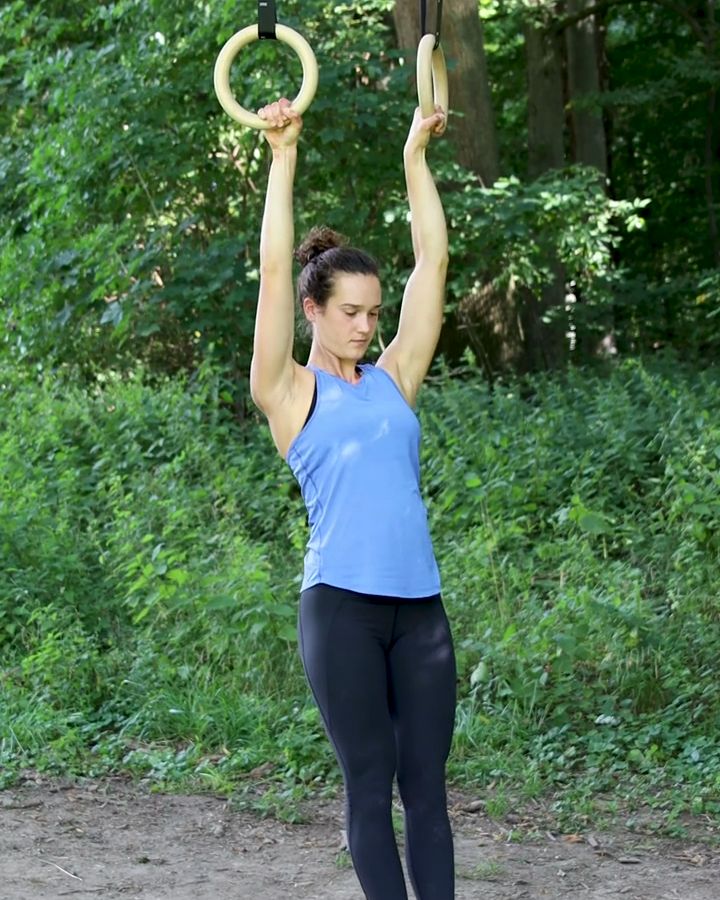
~e5724973d14549c23ea8a586b5736b36.png?alt=media)
